
Examples for discussion
 المؤلف:
David Odden
المؤلف:
David Odden
 المصدر:
Introducing Phonology
المصدر:
Introducing Phonology
 الجزء والصفحة:
135-5
الجزء والصفحة:
135-5
 31-3-2022
31-3-2022
 1443
1443
Examples for discussion
Karok. These data from Karok (California) illustrate three interacting phonological processes. Comment on the underlying forms of the following words, state what phonological rules are motivated, and discuss the order in which these processes apply.
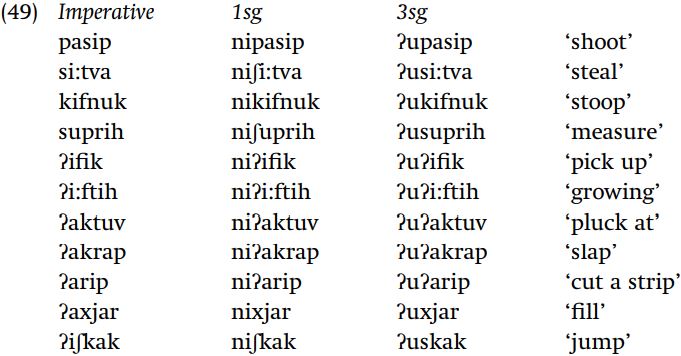

Shona. Often, a seemingly complex problem can be significantly simplified by breaking the problem up into a few interacting processes. If you look at the phonetic realizations of the passive suffix in Shona (Zimbabwe), you see that there are seven different manifestations of this suffix. However, this considerable range of variation can be explained in terms of a much smaller set of very general phonological rules, whose interaction results in many surface realizations of the suffix.

The precise rules which you postulate will depend on what you assume to be the underlying form of the passive suffix, since there are two plausible underlying forms for the suffix, based on the data above. The phonological alternations seen in the following examples are relevant to deciding what the underlying form of the passive suffix is (and therefore exactly how these phonological alternations are to be analyzed). These inflected forms involve a prefix marking the subject, followed by one of various tense markers such as -t ʃ a-, -no-, and -a-, or no marker, finally followed by the verb stem.
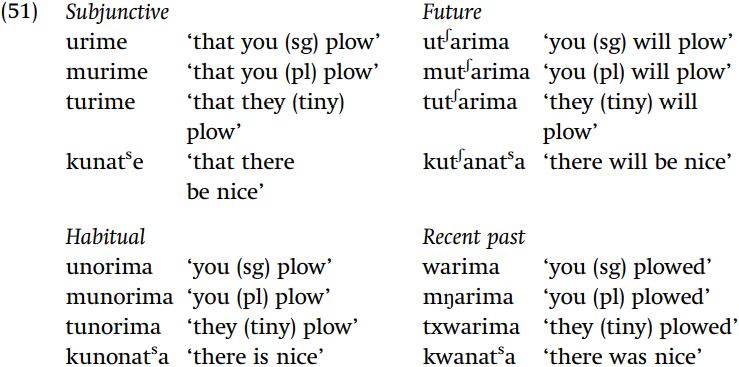
A further fact which is relevant to deciding on the correct analysis is that [γ], [x] do not appear after vowels or at the beginning of a word.
Klamath. The data in (52)–(56) from Klamath (Oregon) illustrate two processes. The first deaspirates and deglottalizes consonants before obstruents, before glottalized and voiceless resonants, as well as in word-final positions. The examples in (52) illustrate plain voiceless obstruents, which do not undergo any phonetic alternations. The data below involve a range of inflectionally and derivationally related word forms: the common root is underlined (the last form in this set also illustrates an alternation between i and j’, which is not crucial).

The data in (53) provide examples of underlyingly glottalized obstruents, which become plain voiceless consonants unless they are followed by a vowel or plain sonorant.


Data in (53) show that aspirated consonants deaspirate in this same context.
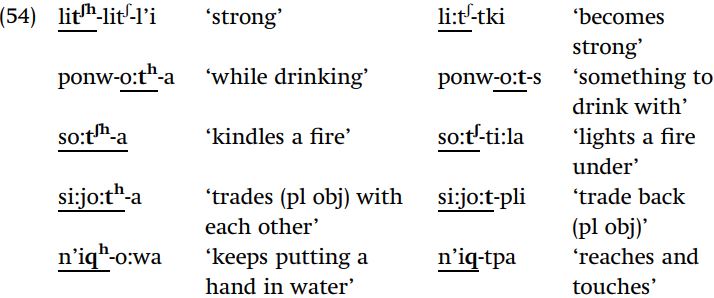
The second process, syncope, deletes a short vowel from the first syllable of a stem when preceded by a CV prefix and followed by CV.
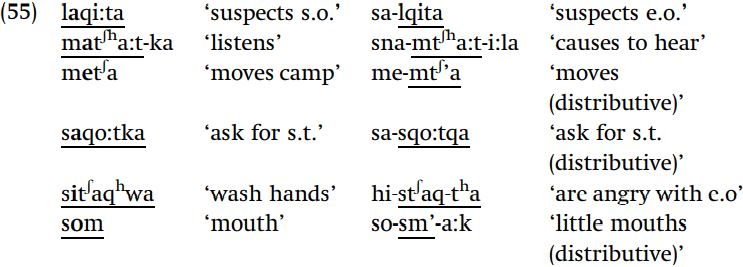
What do these examples show about the interaction of these two processes?
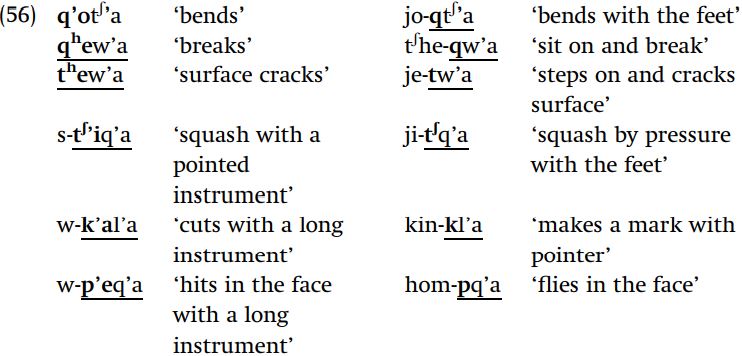
 الاكثر قراءة في Phonology
الاكثر قراءة في Phonology
 اخر الاخبار
اخر الاخبار
اخبار العتبة العباسية المقدسة


